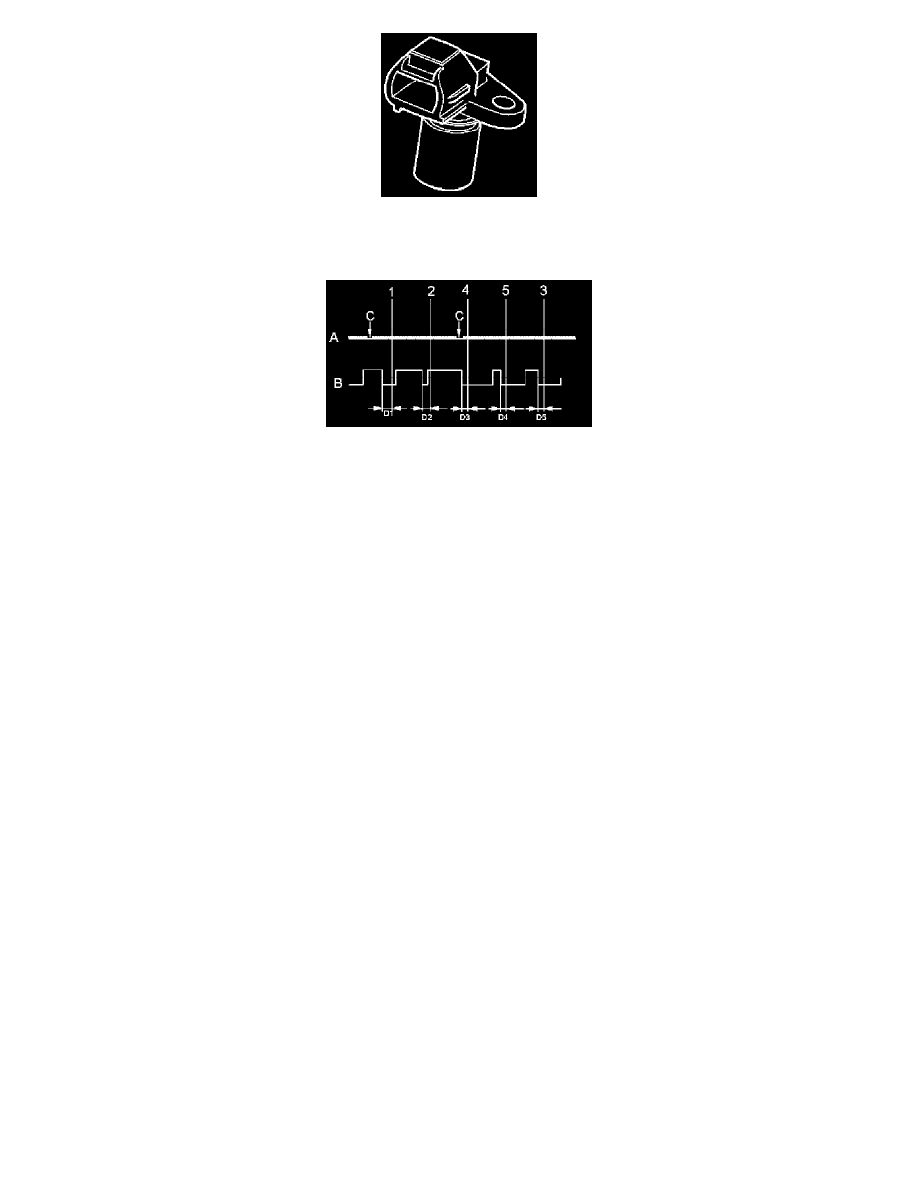V50 L5-2.4L VIN 39 B5244S7 (2005)

The positions on the flywheel are designated degree CA (Crank angle). 0 degree CA = Top dead center cylinder 1.
Detecting the position of the camshaft in relation to the position of the crankshaft
Each camshaft flank aligns with pre-defined positions on the crankshaft when the camshaft is in its 0 position. These positions on the crankshaft are
called flank reference positions. Each flank is 33 degree CA before top dead center (BTDC) when the camshaft is in its 0 position (camshaft not
deployed), see illustration (D1-D5).
A: Engine speed (RPM) sensor signal.
B: Camshaft position (CMP) sensor signal, intake. From high to low signal when the teeth on the camshaft pulley leave the camshaft position (CMP)
sensor.
C: Low engine speed (RPM) sensor signal because of the holes in the flywheel/carrier plate.
1: Top dead center (TDC) cylinder 1, 0 degree CA (84 degree CA after hole "C" in the flywheel/carrier plate).
2: Top dead center (TDC) cylinder 2, 144 degree CA.
4: Top dead center (TDC) cylinder 4, 288 degree CA.
5: Top dead center (TDC) cylinder 5, 432 degree CA.
3: Top dead center (TDC) cylinder 3, 576 degree CA.
Regulating the camshaft position
To control the intake camshaft the engine control module (ECM) regulates the infinitely variable camshaft reset valve. The valve controls the flow of
engine oil to the continuous variable valve timing (CVVT) unit which is affected by the oil pressure that builds up. This allows the CVVT unit to change
the position of the camshaft.
When controlling the camshaft position (the engine control module (ECM) controls the camshaft), detection of the camshaft flanks will be offset from
the reference positions on the crankshaft. Angles D1-D5 will increase when the camshaft is controlled.
HINT: The exhaust camshaft signals are the same as those of the intake camshaft. However, the exhaust camshaft flanks are 318 degree CA before the
intake camshaft flanks.
The engine control module (ECM) is then able to calculate the degree CA (crankshaft degrees from top dead center (TDC)) that the intake valve opens
and the exhaust valve closes for each cylinder. This is because the opening and closing angles are fixed and predefined in relation to the camshaft flanks.
The camshaft position relative to the crankshaft position can be read in Vehicle Information and Diagnostics Application (VIDA).
Camshaft Reset Valve
Camshaft Reset Valve
